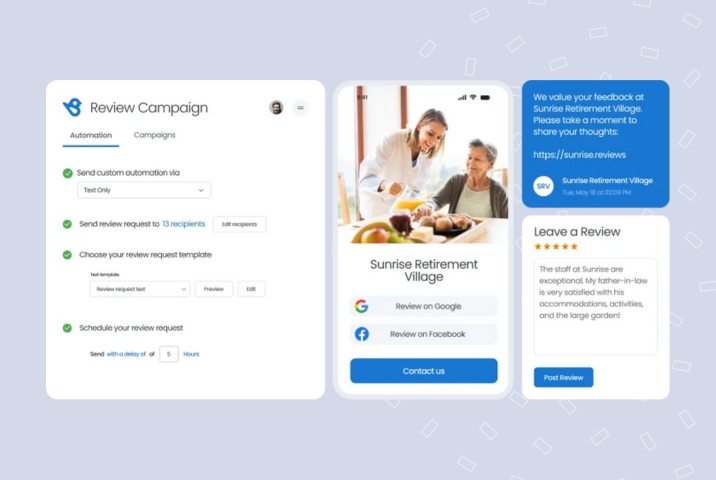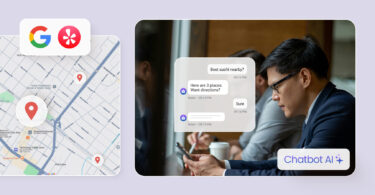If you’re trying to reach prospects/customers in Australia, SMS marketing deserves a central spot in your strategy. While it may seem like capturing customer attention on digital channels is easier than ever, with people constantly glued to their phones, the reality is quite different. Getting customers to respond or even pay attention to most messages or marketing campaigns is now more complex than ever.
Email open rates are falling, social media algorithms are unpredictable, and paid ads rarely guarantee a real connection and engagement. That is why investing in SMS marketing in Australia is the most profitable move for modern businesses.
With an extremely high open rate and near-instant delivery, SMS cuts through the noise fast. It is also versatile enough to accommodate transactional messages, promotions, and introductions.
However, implementing a successful SMS marketing campaign in Australia means knowing what, how, and when to send SMS and what you can’t send.
In this blog, you’ll learn how to stay compliant, lower your SMS marketing costs, pick the right tools, and apply high-impact SMS strategies tailored for Australian audiences.
Table of contents
- How SMS marketing works: Australia edition
- Australian SMS compliance rules every business should know
- Why should businesses invest in SMS marketing in Australia?
- SMS marketing costs in Australia
- Top 5 SMS marketing strategies for Australian businesses
- How to choose the right SMS marketing platform for your Australian business
- Bottom line: SMS marketing in Australia – a valuable tool for customer engagement
- FAQs on SMS marketing in Australia
- Grow your SMS marketing campaigns in Australia with Birdeye
How SMS marketing works: Australia edition
SMS marketing in Australia allows businesses to send promotional or transactional text messages directly to a customer’s mobile phone. These business text messages can be used to send time-sensitive offers, appointment reminders, surveys, updates, or loyalty incentives. But unlike email or social media, SMS messages land in the one place Aussies check most often—their text inbox, making them incredibly effective.

But it’s also heavily regulated, meaning marketers must understand how SMS campaigns work within legal and carrier frameworks in Australia.
Australian SMS compliance rules every business should know
Before launching any SMS campaign, Australian businesses must understand that SMS is a regulated marketing channel, not just a digital free-for-all. Missteps can result in penalties from the Australian Communications and Media Authority (ACMA), damaged brand trust, and a flood of opt-outs.
This is unlike any other marketing channel, and businesses must know the four core compliance areas they must adhere to.
Explicit consent from your customers
The cornerstone of SMS marketing laws in Australia is consent; you cannot send marketing messages to customers without it. You can ensure customers express consent via a form, tick box, verbal agreement, or keyword-based responses like “JOIN,” “AGREE,” or “YES.”
What’s not allowed?
- Pre-checked opt-in boxes on forms for all SMS messages.
- Using contact details collected for another purpose (like a competition or Wi-Fi login) without consent for marketing.
Unsubscribe links to all marketing messages
All marketing messages must include a clear and functional opt-out—no exceptions. This can be a keyword-based response like “Reply STOP to unsubscribe” or a short link to manage preferences if customers want to stop receiving SMS messages from a business.
The opt-out must:
- Be visible within the text body (not just a hidden link)
- Be free or low-cost to use
- Be actioned promptly, ideally within five working days
Pro tip: Tools like Birdeye automatically manage opt-outs and update your contact list in real time, reducing compliance risks.
Follow the Spam Act 2003 and Spam Regulations 2021
Australia’s SMS marketing is regulated by two key legal frameworks: the Spam Act 2003 and the Spam Regulations 2021. The Australian Communications and Media Authority (ACMA) actively enforces these laws, and businesses found in violation can face steep fines. This can range from thousands to millions of dollars, making it essential for every SMS campaign to be legally sound and adequately documented.
Spam Act 2003
The Spam Act 2003 establishes the foundation for lawful SMS communication. It requires businesses not to send unsolicited commercial messages, to identify themselves as the sender clearly, and to always include a functional unsubscribe mechanism in every text. This ensures transparency, user control, and accountability.
Spam Regulations Act 2021
The accompanying Spam Regulations 2021 build on this by defining what qualifies as consent, setting standards for how businesses must store and manage consent records, and outlining penalties for non-compliance.
Use approved SMS software
Not all SMS software is built for Australian compliance, especially regarding compliance and other regulations.
You must choose a platform that:
- Operates within Australian carrier networks
- Supports local sender IDs, opt-out handling, and consent logs
- Offers data storage options in line with the Privacy Act 1988 (Cth)
Platforms like Birdeye offer pre-compliant message templates, double opt-in workflows, and audit-friendly dashboards. These are crucial if you manage multiple locations and large contact volumes.
Why should businesses invest in SMS marketing in Australia?
With digital fatigue at an all-time high, SMS marketing in Australia offers a direct, clutter-free way to reach customers, especially when timing matters most. For multi-location businesses, it’s more than just a communications tool; it’s a growth channel.
In this section, we’ll explore four key reasons SMS marketing delivers strong returns for Australian brands: its immediacy, ability to reach the right audience, cost-efficiency, and power to build long-term loyalty.
Immediate response
Text messages have a 98% open rate, and most are read within 90 seconds of delivery. Whether running a retail promotion across multiple stores or sending emergency alerts from a healthcare network, SMS lets you cut through digital noise and reach customers when it matters.
That makes it ideal for:
- Flash sales
- Last-minute schedule changes
- Limited-time offers
- Post-service review requests
Birdeye research shows that businesses using SMS for review requests have up to 2x higher response rates than email users.
Helps communicate with the target audience
SMS doesn’t just reach people, it reaches the right people. With geo-targeting, segmentation, and CRM integration, SMS campaigns can be customized by:
- Location
- Purchase behavior
- Booking history
- Customer lifecycle stage

This makes it a powerful tool for multi-location businesses in Australia that want to speak to local audiences with location-specific promotions or updates, without managing hundreds of fragmented campaigns.
Cost-effective marketing campaigns
SMS offers low-cost execution with high returns. Unlike paid ads, you’re not bidding for impressions or navigating algorithm changes. You pay per message, not per click, scroll, or view.

Deepen customer relationships
SMS fosters two-way engagement, something few channels can match. Two-way conversations build trust and keep your brand top of mind. Platforms like Birdeye allow AI-powered follow-ups based on a customer’s response tone, helping brands automate empathy without losing the personal touch.
With SMS, you can:
- Ask for feedback after a service
- Send interactive customer satisfaction surveys
- Remind patients or clients about upcoming appointments
- Trigger win-back flows for lapsed customers
SMS marketing costs in Australia
If you plan to scale your SMS marketing in Australia, understanding the actual cost is crucial, not just per text message, but across the entire marketing lifecycle. Costs can vary based on message volume, features, compliance, and your chosen SMS gateway platform.
In this section, we’ll break down what businesses should expect to spend, where hidden costs can creep in, and what makes an SMS investment worthwhile for multi-location businesses.
1. Cost per SMS message
The base cost of sending an SMS in Australia typically ranges from $0.05 to $0.10 AUD per message, depending on:
- Message length (standard SMS is 160 characters)
- Carrier fees
- Whether it’s one-way or two-way messaging
- Volume discounts (bulk sends are cheaper)
Two-way SMS or messages with links may cost slightly more. Long messages are often split into multiple segments and billed as a whole per segment, which can unknowingly double or triple your cost.
Businesses sending large volumes (10K+ per month) can negotiate lower per-SMS rates or more SMS credits as necessary.
2. Platform subscription and setup fees
Most platforms charge a monthly subscription fee that covers SMS automation tools, campaign scheduling, CRM/contact management, reporting and analytics, keyword-based opt-ins, unsubscribe tracking, and SMS credits.
These plans typically start at $49/month for small businesses and can go beyond $300/month for multi-location setups with advanced features, integrations, and higher SMS volumes.
Some providers also charge:
- Setup/onboarding fees (one-time)
- Custom sender ID registration (optional, but recommended)
- Dedicated shortcodes (premium service)
3. Compliance costs
This often gets overlooked, but compliance management has real cost implications, especially for multi-location businesses.
- You’ll need tools that log customer consent, manage opt-outs in real time, and store records in a format that satisfies Australian privacy and spam laws.
- As in prior enforcement cases, non-compliance can result in financial penalties from AMCA ranging from thousands to millions.
Platforms like Birdeye offer automated compliance safeguards, such as consent tracking, message templates, and intelligent opt-out handling, that help prevent costly mistakes and reduce legal risks at scale.
Top 5 SMS marketing strategies for Australian businesses
Whether you’re managing three stores or three hundred, the real power of SMS marketing in Australia lies in strategy. Sending promotional blasts alone won’t drive long-term growth; you must integrate SMS into your marketing plan to enhance the entire customer lifecycle, from discovery to loyalty.
This section will explore five high-impact SMS marketing strategies tailored to Australian businesses, with real-world relevance for multi-location operations.
Promote store events and product launches
SMS drives in-store traffic or event participation by sending timely reminders, location-specific discounts, or RSVP links. It creates urgency and local relevance. By personalizing messages based on postcode or store, businesses increase turnout and boost conversions without spamming their entire list.

Examples:
- “Join us this Saturday at our Bondi store for our winter clearance sale!”
- “Exclusive offer: 20% off only at our Melbourne CBD location. Show this text in-store.”
Pro tip: Use shortcodes or branded sender IDs so customers know the text messages are legitimate and from your brand. You can pre-program these into your SMS marketing software for ease and consistency.
Send out surveys and review requests
Surveys are key to collecting first-party feedback, and SMS has some of the highest response rates of any channel. Pairing follow-ups with automated review requests (via Birdeye’s Reviews AI) can significantly boost your Google review volume and online reputation.

Use SMS to:
- Request quick feedback after service with survey links or review requests
- Run Net Promoter Score (NPS) surveys
- Gather customer preferences
Survey example: “How likely are you to recommend us? Reply with a number from 0 to 10.”
Review request example: “Thanks for visiting AutoCare Brisbane! We’d love your feedback—please leave us a quick review here: [short link]”
Platforms like Birdeye allow you to automate review requests and surveys post-interaction, route responses to relevant teams/platforms, and integrate insights into broader customer experience strategies.
Run a successful SMS campaign in Australia
Want to see the impact of Birdeye on your business? Watch the Free Demo Now.
Deliver appointment confirmations and reminders
For service-based industries like healthcare, fitness, and wellness, missed appointments cost time and revenue. SMS helps reduce no-shows and improve operational efficiency.

Multi-location businesses can use text messages to send booking confirmations, 24-hour reminders, and appointment rescheduling conversations. Receiving such messages directly on their mobile devices reduces friction for consumers and enables them to keep appointments consistently.
Example: “Hi Mia, your dental appointment at Smile Studio Bondi is confirmed for Tuesday at 10:30 AM. Reply YES to confirm or NO to reschedule.”
Post-purchase follow-ups
Don’t let the customer journey end at the checkout. Use text messages to continue the conversation with order updates or delivery notifications, thank-you notes, and links to product care tips or usage instructions.

Build loyalty and referral programs
Reward your most valuable customers and grow through word-of-mouth by using SMS to promote exclusive member perks or referral bonuses. SMS lets you stay top-of-mind without relying on customers to check their email or download a loyalty app.

Here are a few ideas for your text message advertising program:
- “You’ve unlocked a $10 voucher for your next visit—just for being awesome.”
- “Refer a friend and you both get 20% off your next treatment!”
How to choose the right SMS marketing platform for your Australian business
Not all SMS gateways/platforms are created equal, especially when managing multiple locations, varying compliance needs, and diverse customer journeys. Australian businesses need more than just a texting tool; they need fully integrated, compliant, and insight-driven SMS software that can scale.

Here’s what to look for in an SMS marketing platform for continued success:
- User-friendly dashboard: Teams across locations shouldn’t need technical support to launch or manage campaigns. A user-friendly dashboard helps marketing, operations, and frontline staff easily create and monitor SMS messages without training delays or platform confusion.
- Multi-location integration: Without built-in multi-location support, businesses risk sending generic messages that don’t resonate—or worse, messages to the wrong audience.
- Compliance: Australia’s Spam Act 2003 and Spam Regulations 2021 require explicit consent and opt-out capabilities. Failing to meet these standards can result in massive penalties and brand damage.
- Efficient contact management: Clean, segmented, and dynamic contact lists are the backbone of any successful SMS campaign. Without them, businesses send irrelevant messages, face high bounce rates, and see lower engagement.
- AI integration for responses and analytics: Manual campaign management doesn’t scale, especially for businesses with dozens of locations and thousands of customers. AI and automation help marketers optimize efforts without losing personalization.
- Custom reporting dashboards: You need to understand what’s working and where to improve, by channel, location, and campaign type. These insights help you adjust messaging strategies, prove ROI, and confidently guide future campaigns.
Bottom line: SMS marketing in Australia – a valuable tool for customer engagement
For multi-location businesses in Australia, SMS marketing isn’t just another channel—it’s a competitive advantage. With unmatched open rates, instant delivery, and strong ROI, SMS helps brands cut through digital noise and connect meaningfully with customers. But to unlock its full potential, businesses must navigate strict compliance rules, tailor messages by location, and choose a platform that supports scale and automation.
When done right, SMS marketing drives real engagement, improves retention, and keeps your brand top-of-mind, wherever your customers are. It’s not just about sending messages but building lasting conversations that convert.
FAQs on SMS marketing in Australia
Yes, SMS marketing is legal in Australia, but it is strictly regulated under the Spam Act 2003 and Regulations 2021. Businesses must obtain explicit, informed consent before sending any promotional text and always include an option to unsubscribe.
The SMS marketing rules in Australia require businesses to gain explicit opt-in consent, including the sender ID, and allow a functional unsubscribe option in every text message.
SMS marketing campaigns in Australia can deliver an average ROI of $29 to $45 per dollar spent, depending on the industry and targeting precision. Thanks to high open and engagement rates, SMS often outperforms email and paid ads cost-effectively.
Grow your SMS marketing campaigns in Australia with Birdeye
Ready to turn SMS into your most effective engagement channel? Birdeye’s SMS marketing platform is built for Australian businesses with multiple locations, offering everything you need to stay compliant, automate campaigns, personalize messages, and track performance at scale.
With tools for consent management, AI-powered replies, campaign automation, and location-level reporting, Birdeye helps you connect faster and convert more, without the manual work.
Watch a free demo to understand how Birdeye can help you build conversations that drive results.

Originally published









